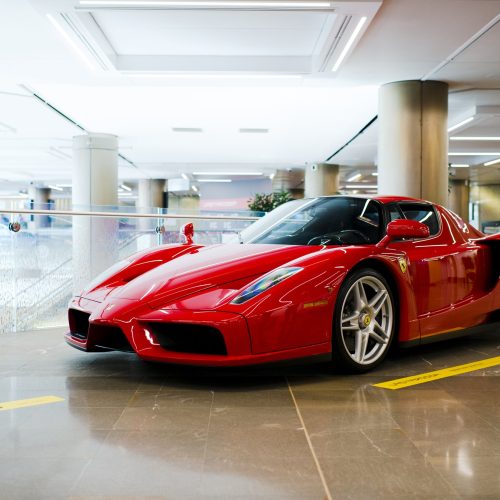
Ferrari Enzo 04 & 05 198824 (F140)
There are few machines in the automotive world as sacred as the Ferrari Enzo. Named after the company’s legendary founder, the Enzo was built from 2002 to 2004 and represented the pinnacle of Ferrari engineering in the early 2000s. Only 400 were ever made, and each one carries its own story. This is the story of Enzo #198824 — a 2004/2005 model — and the surgical precision required in one of the most crucial service jobs: a clutch rebuild.
Understanding the Ferrari Enzo’s Drivetrain (F140 V12)
At its core, the Enzo is powered by the F140 B 6.0-liter V12 — the spiritual predecessor to the LaFerrari’s hybrid-enhanced powerplant. With 651 horsepower and Formula 1-inspired technology, it delivered performance numbers that embarrassed most supercars of the era.
But none of that power makes it to the wheels without the clutch — a complex, finely-tuned component that gets less attention than it deserves. Unlike manual Ferraris of the past, the Enzo features a single-clutch automated manual gearbox (the F1-style transmission), which can be punishing on the clutch over time, especially with spirited driving.
Signs It’s Time for a Clutch Rebuild
Clutch wear is inevitable, even on a car as pampered as an Enzo. For #198824, the signs were subtle but unmistakable:
-
Slight slippage under full throttle
-
Delayed engagement during aggressive downshifts
-
Inconsistent engagement point
While these issues might seem minor, in a car worth over $3 million, proactive maintenance is everything.
Clutch Rebuild: What It Involves
Rebuilding the clutch on an Enzo isn’t a quick Saturday job in the garage. It’s a labor-intensive process that requires experience, specialized tools, and an understanding of the Enzo’s architecture. Here’s a breakdown of the key steps:
1. Preparation & Disassembly
The rear subframe must be removed to gain access to the transmission and clutch housing. This is where the process starts to separate seasoned Ferrari techs from the rest. The packaging on an Enzo is tight, and one wrong move can turn a repair into a nightmare.
2. Clutch Removal
The Enzo uses a twin-plate clutch system. It’s removed carefully, inspected for wear, warping, and heat damage. In #198824’s case, the clutch was near the end of its life but had avoided major damage.
3. Rebuild vs. Replace
Depending on the condition, parts like the friction discs and pressure plates can be resurfaced, but in most cases, it’s smarter to install a full OEM clutch rebuild kit. Ferrari no longer makes many parts directly, so sourcing genuine components through the right channels is key — and costly.
4. Sensor Calibration & Gearbox Adaptation
Once the new clutch is installed, the transmission’s ECU must be reprogrammed to adapt to the new engagement points. A diagnostic tool such as an SD3 or Leonardo system is needed. Skipping this step means poor engagement, jerky shifts, or premature wear.
5. Test Drive & Burn-In
Finally, after reassembly, a careful test drive under varying loads helps ensure everything works seamlessly. For Enzo #198824, we followed the standard break-in protocol: gentle use for the first 500 kilometers.
Rebuilding a Ferrari Enzo clutch with GTE is a smart decision for several key reasons, especially when it comes to performance, longevity, and preserving the value of an ultra-rare hypercar.







0 comments